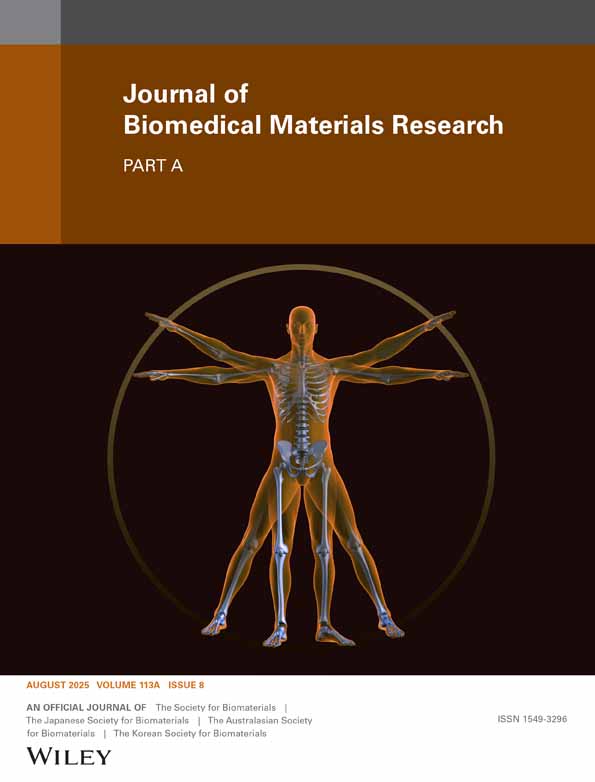Microtensile testing of collagen fibril for cardiovascular tissue engineering
Abstract
As a candidate scaffold material for cardiac tissue engineering, Type I collagen material shows different mechanical properties due to the differences in the structural features such as orientation of fibril alignment and the environmental factors such as ultraviolet (UV) irradiation. In this article one-dimensional tensile stress tests were performed with the use of a nanoscale tensile tester on four groups of Type I collagen samples that were differentiated in terms of fibril orientation and/or UV irradiation. The collagen surface structure was studied with the use of an atomic force microscope (AFM). Effects of fibril orientation and UV irradiation on their mechanical properties were investigated. The mechanical properties and deformation mechanisms are discussed in conjunction with collagen structure, fibril orientation, and dispersion of the generated crosslinking by UV irradiation. © 2005 Wiley Periodicals, Inc. J Biomed Mater Res, 2005




